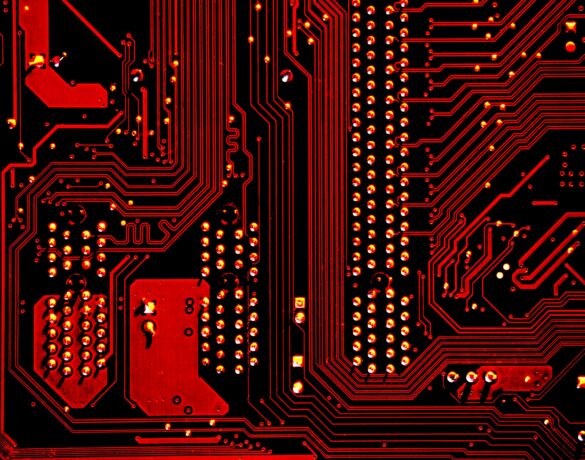As technology becomes intertwined even more in our daily lives, we’ve become entirely dependent on the gadgets around us. But there is a looming issue, a stark reality, that people are slowly waking up to. This threatens every business today and is something that we cannot just wish away. We are, of course, referring to the semiconductor shortage and how it’s slowly, but surely, catching up to all of us.
The faithful semiconductor is the foundation of every electronic device from clocks, to computers, to cars. And the shortage is making it difficult to generate enough to go around. But why is this happening, and how come we weren’t ready for it?
Let’s look at a few issues that have caused this global chip shortage.
Why Is There a Chip Shortage?
While it is true that the pandemic had a huge role to play in this shortage, it wasn’t the only problem. Add to this the stockpiling and ordering of chips by tech firms in anticipation of the shortage. Another area that put stress on the semiconductor industry was that people needed more computing power to shift to their home office in the form of laptops, webcams, and other accessories.
These were not the only problems – drastic changes to weather over the world due to global warming had an equally huge impact. The winter storm in Texas nearly shut down the whole city, with power outages lasting over four days in some areas. This completely shut down semiconductor production for months. All these issues pushed the already stressed logistics network further to the edge. Moving and shipping costs increased a staggering 1000% compared to last year.
How Long Is the Chip Shortage Going to Last?
Again, the answer to this isn’t going to be cut and dry either. There are several speculations on this, with the earliest recovery being in another two years at the least. Several prominent industry veterans estimate that this will last till about 2023.
The problem with semiconductor consumption is that it is not something that we can just dial down without sacrificing our way of life. It raises bottlenecks in the production cycle that industries have not been able to even predict, much less ready themselves for. So we really don’t know how long this is going to last.
Strategies to Reduce the Impact of Chip Shortages
As demand skyrockets for chips with no signs of slowing down, there are more immediate solutions to the problem.
Opt for refurbished equipment
Refurbished equipment has become a mainstay in most major corporations today. Even enterprise-level brands like Google and Microsoft do not discriminate between new and refurbished in the inventory. In fact, companies that spend billions on new IT infrastructure opt for refurbishment because it reduces spending and comes with better support.
Coming to the current scenario, buying refurbished completely avoids the current chip shortage problems.
Buying refurbished equipment cuts down on costs and lead times. Also, in more than a few cases, companies are just not able to get the equipment they want, even for marked-up prices. Refurbished offers a more advantageous solution for companies in that they are able to meet demands and at considerably less cost.
Third-party maintenance services
Another way businesses that have already invested considerably into their IT infrastructure can cut down on maintenance is through third-party support. The reason why this is important is that OEM brands do not support equipment after a specific period, also known as End of Life. This pushes companies to replace their equipment with newer models even though they only need minor maintenance or updates.
This, unfortunately, is not good business practice, especially when there are huge markups to the tune of 300% for silicon owing to the chip shortage. Opting for third-party maintenance is a solution that doesn’t just save you money. Global brands like Aliter Networks can practically double your equipment lifetime through their maintenance processes, including high-quality replacement components and comprehensive testing facilities.
Third-party manufacturing
Third-party manufacturing can also alleviate this problem if nothing as a stopgap solution. Most bigger manufacturers are running out of silicon and shifting the burden of increased prices to the customer. While this is not as permanent as refurbishment and maintenance, it’s a valid strategy if companies want to buy new.
Smaller, more agile third-party manufacturers like Alperio can offer much more cost-effective compatible plugables for businesses. This also ensures that new products are compatible with your existing IT infrastructure, which means you’re ready to go as soon as possible. Buying from Alperio and Aliter will give your business significant budget headroom because you get equipment that is compatible with your existing infrastructure and backed by a comprehensive maintenance program.
Refurbishment for the Future
Time and again, the refurbishment has stepped up where most other methods have been found wanting. Our reliance on under-optimized business decisions is a major cause of this chip shortage. While it might be a series of unprecedented events that brought the IT fraternity to its knees, demand exceeding supply was always on the cards when left unchecked.
The chip shortage highlights how delicate the balance has been to date. As we move on, businesses need to ensure that they operate with an eye on dwindling global resources. Refurbished equipment means less lead time for equipment supply, less strain on logistics, and cost savings across the board.
If you’re a business seemingly stranded between lack of supply and stratospheric markups, we at Aliter would like to hear from you. We are all about enabling businesses to achieve their goals without stumbling over unexpected hurdles along the way. Affected by low profitability and high lead times due to the Chip Shortage?
Speak to us now and we can help!





